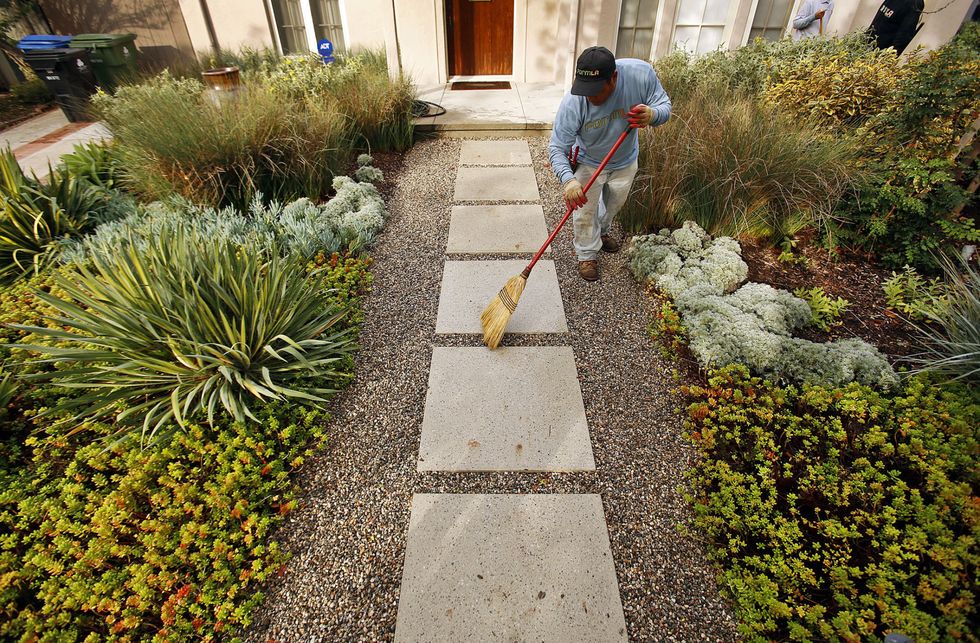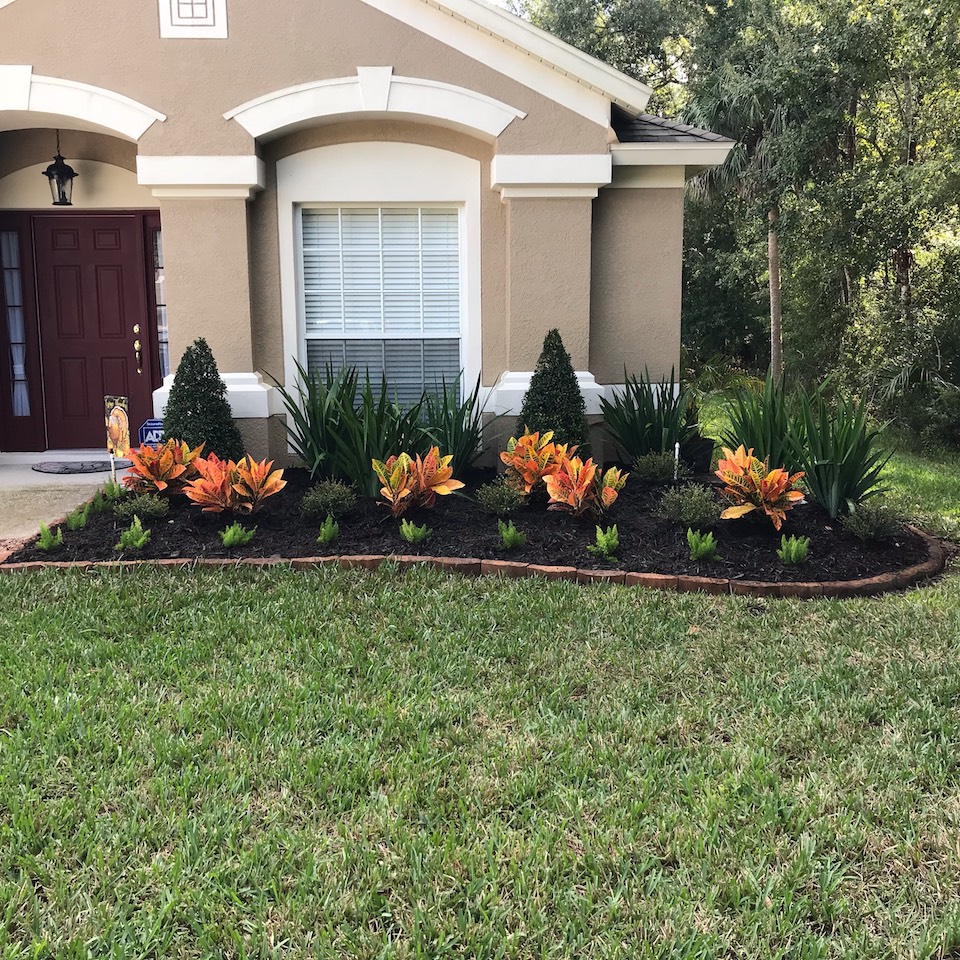Discover the Perks of Lasting Palm Desert Landscaping Techniques
Discover the Perks of Lasting Palm Desert Landscaping Techniques
Blog Article
A Comprehensive Guide to Creating and Implementing Effective Landscaping Solutions
The art and scientific research of landscape design extend past plain appearances; they involve a thoughtful combination of design concepts, ecological stewardship, and useful execution. What strategies can one utilize to make certain these landscapes not only thrive yet additionally flourish in harmony with their surroundings?

Comprehending Landscape Design Concepts
One may question what foundational components add to effective landscape design. At its core, effective landscape style depends upon a number of vital principles that lead the plan and selection of aspects within a room. These principles include unity, equilibrium, rhythm, and percentage, each offering to create a harmonious outdoor environment.
Unity refers to the natural relationship amongst numerous elements, making certain that they interact aesthetically and functionally. Equilibrium can be achieved with balanced or asymmetrical arrangements, permitting the landscape to really feel stable and inviting. Percentage entails understanding the scale of components in regard to each other and the surrounding atmosphere, advertising visual harmony and comfort.

Evaluating Your Outdoor Room
Before executing the principles of landscape style, a comprehensive evaluation of your outdoor space is crucial. This first assessment assists specify the extent of your landscape design task and ensures that your design lines up with the one-of-a-kind attributes of your building. Begin by analyzing the measurements of your room, taking accurate measurements to understand the available location for numerous elements such as patios, pathways, and yards.
Next, observe the existing attributes of your landscape, consisting of topography, soil high quality, and water drainage patterns. These factors dramatically affect plant option and positioning. In addition, assess the sunshine exposure throughout various areas throughout the day, as this will affect the kinds of plants that thrive in your yard.
Take into consideration the microclimates created by frameworks, trees, and other barriers, as they can affect temperature and wetness degrees. Last but not least, bear in mind of any kind of existing plants or hardscape elements that you desire to preserve or get rid of. This detailed evaluation prepares for a reliable and educated landscaping option, guaranteeing that your design is not just cosmetically pleasing however additionally useful and sustainable for many years to find.
Lasting Landscaping Methods
These techniques not just advertise ecological equilibrium however additionally improve the functional and aesthetic worth of a landscape. Implementing effective irrigation systems, such as drip irrigation, minimizes water waste and makes sure that plants obtain sufficient wetness (Palm Desert Landscaping).

Another effective technique is the calculated placement of trees and bushes to offer natural windbreaks and shade, thus decreasing energy prices (Palm Desert Landscaping). Rain yards can be incorporated right into the landscape design to take care of stormwater drainage properly, filtering contaminants before they enter waterways
Picking the Right Plants
Choosing the right plants for your landscape is vital to accomplishing both aesthetic charm and environmental harmony. The procedure begins with an understanding of your local environment, soil problems, and the certain microenvironments within your landscape. Examining factors such as sunlight exposure, dampness levels, look at here now and existing plants will assist you pick plants that grow in your special setup.
Consider incorporating native plants, as they are well-adapted to neighborhood conditions, require much less upkeep, and assistance local wild animals. Additionally, selecting a varied array of types can boost biodiversity while minimizing the danger of condition and pest outbreaks. It is important to evaluate the development routines, blooming durations, and seasonal shades of prospective plants to create a natural and vibrant landscape.
Furthermore, consider the planned use of the room; for circumstances, if the location will experience high foot website traffic, go with resistant ground covers. By attentively picking plants that line up with both your environmental requirements and visual goals, you can develop a lasting landscape that not just enhances your property but also contributes positively to the bordering community.

Implementation and Maintenance Approaches
When the best plants have been selected for your landscape, the emphasis changes to reliable implementation and ongoing maintenance methods. Successful installment starts with appropriate website preparation, which consists of soil testing to identify nutrient levels and pH, adhered to by amending the soil as needed. Thoroughly organize plants according to their development practices and light requirements, making certain sufficient spacing to advertise healthy growth.
Irrigation is a vital aspect of execution. Establish a watering schedule that takes into consideration the specific demands of each plant types, changing for seasonal changes. Utilizing drip irrigation systems can enhance water efficiency and decrease overflow.
Upkeep strategies must be executed to make certain the longevity and vitality of your landscape. Normal tasks consist of weeding, mulching, and pruning to control growth and stop condition. Fertilization should be conducted based on dirt examinations, providing the essential nutrients without over-fertilizing.
Keeping an eye on for parasites and illness is crucial; early discovery can stop considerable damages. Last but not least, seasonal modifications to upkeep regimens, such as winterizing perennials and preparing for spring development, will certainly ensure that your landscape remains healthy and aesthetically appealing year-round.
Verdict
In final thought, efficient landscaping solutions call for a detailed understanding of style principles, precise evaluation of outside spaces, and the application of lasting techniques. The choice of ideal plant species plays an essential duty in enhancing aesthetic appeal and ecological durability - Palm Desert Landscaping. Effective application and recurring maintenance even more guarantee the longevity and vigor of landscapes. By integrating these elements, landscapes can be transformed right into lovely, practical atmospheres like it that promote biodiversity and add positively to community wellness.
One could wonder what foundational elements add to reliable landscape style. At its core, successful landscape design hinges on numerous key concepts that guide the setup and option of components within an area.Choosing the right plants for your landscape is critical to achieving both aesthetic appeal and eco-friendly harmony. It is important to evaluate the development behaviors, flowering durations, and seasonal colors of prospective plants to create a cohesive and vibrant landscape.
When the best plants have been selected for your landscape, the emphasis moves to moved here reliable application and continuous upkeep strategies.
Report this page